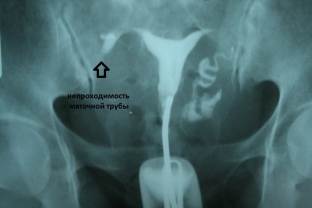Algodysmenorrhea, or painful menstruation, is one of the most common gynecological problems. Almost all women experience discomfort during menstruation, but with algomenorrhea, the intensity and severity of the pain syndrome significantly affects the quality of life and the general condition of the woman. If primary algomenorrhea is a pathology that occurs literally from the very beginning of menstruation in a girl, then secondary algomenorrhea occurs much later and is an alarm signal indicating the presence of a disease of the reproductive system.
Secondary algomenorrhea: main causes, methods of diagnosis and treatment
Secondary algomenorrhea develops against the background of diseases of the female reproductive system. It is caused by organic changes in the pelvic organs and most often develops in women after 30 years of age who have a gynecological history of pregnancy, childbirth, abortion or inflammation of the internal genital organs. Secondary algomenorrhea is a kind of symptom that requires not only targeted therapy, but also complex treatment of the body. A detailed examination of the body and a properly selected therapeutic regimen will help eliminate both algomenorrhea and the pathological process that provokes it.
Secondary dysmenorrhea:
- what diseases can provoke secondary algomenorrhea;
- the main methods for diagnosing secondary algomenorrhea;
- therapeutic tactics in establishing the diagnosis of secondary algomenorrhea.
What diseases can provoke secondary dysmenorrhea
There is a huge number of diseases of the female reproductive system that can provoke secondary algomenorrhea. The most common cause of painful periods can be:
- endometriosis - pain is often present throughout the entire menstrual cycle, increases a few days before menstruation, is aching in nature and is not accompanied by other symptoms;
- submucosal uterine fibroids - menstruation is accompanied by sharp intense cramping pains;
- nascent myomatous nodes - pain occurs when the node is pushed out through the cervical canal by means of uterine contractions;
- ruptures of the posterior leaf of the broad ligament of the uterus - often occur as a result of traumatic manipulations on the internal genital organs;
- varicose veins of the small pelvis - is the result of inflammatory and adhesive processes in the cavity of the small pelvis;
- malformations of the genitals that impede the outflow of menstrual blood - pain increases from the period of menarche;
- chronic inflammatory processes in the small pelvis - the resulting adhesions also provoke pain during menstruation;
- Intrauterine contraceptives - pain during menstruation is due to an increased concentration of prostaglandins in the endometrium.
Basic methods for diagnosing secondary dysmenorrhea
The diagnostic process of secondary algomenorrhea is based primarily on the data of the gynecological history. Information about the spontaneous occurrence of dysmenorrhea after a long period of painless menstruation or data on previous gynecological diseases and manipulations help to differentiate secondary dysmenorrhea from primary. For a more detailed diagnosis, instrumental research methods are used:
- ultrasound examination allows diagnosing various intrauterine pathological processes;
- hydrosonography - the use of a contrast agent in transvaginal ultrasound allows better visualization of the intrauterine pathological process;
- hysterosalpingography is an X-ray contrast study that best visualizes adhesive processes in the pelvic organs;
- hysteroscopy and laparoscopy are the most informative methods used not only for diagnostic purposes, but also for therapeutic purposes.

Therapeutic tactics in establishing the diagnosis of secondary dysmenorrhea
Treatment of secondary dysmenorrhea consists, first of all, in the elimination of the disease that provoked painful menstruation. As a symptomatic therapy, antispasmodic and analgesic drugs are allowed, but long-term use of tranquilizers and analgesics with an unspecified diagnosis is unacceptable. Organic diseases of the female reproductive system that provoke secondary algomenorrhea often require surgical treatment. Anti-inflammatory and antibiotic therapy is effective only in some cases. It is very important to detect and treat malformations of the uterus and vagina in a timely manner, since a long retrograde reflux of menstrual blood into the abdominal cavity provokes the development of endometriosis.








Add a comment